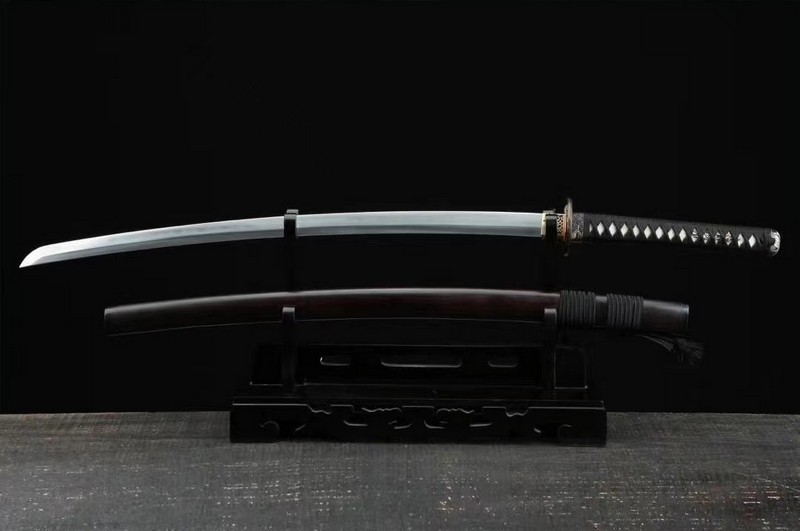Know What Sword Blades Can Be Made Of
Followings are the most popular CARBON STEEL blades:
1060 High Carbon Steel Blade:
1060 carbon steel is a fairly basic steel with only Carbon and Manganese added to the Iron, has the lowest practical carbon content of 0.60%. 1060 steel is inexpensive and relatively easy to grind and work with. It offers a great compromise between hardness (edge holding ability) and pliability (strength), so 1060 Carbon Steel swords are very popular.

1095 High Carbon Steel Blade:
1095 is sort of the "standard" carbon steel, it is categorized on the basis of 0.95% carbon. 1095 qualifies as a high-carbon hardened steel. It offers the highest carbon content, it yields the sharpest edge. Toughness, hardness and durability make 1095 steel the most-popular choice for swords.
1095 Carbon steel is very HARD - and unless it is properly heat treated, this hardness can sometimes be problematic when used on harder targets. When tempered properly, 1095 steel is great for swords as when it is clay tempered.

9260 Spring Steel Blade:
9260 Spring Steel (also called Silicon Manganese Steel) consists of 2% silicon content, giving it an even more dramatic resilience against lateral bends and allowing it to spring back to true even after being bent almost to 90 degrees.
The 9260 spring steel has a significantly increased fatigue resistance compared to its nearest similar standard 1060 carbon steel. 9260 has the capability to be a harder blade, the incredibly crafted blade that has both strength and flexibility makes a high-quality katana sword.

Folded Steel Blade:
A folded steel blade is typically made from high carbon steel. The difference is that its process is the folding of the steel, where the swords are made by repeatedly heating, hammering and folding the metal. Our folded steel blade is folded 14 times creating 8192 layers. Folded steel makes the blade a better cutter and more durable.

Clay Tempered Blade:
Clay-Tempered is the process of using clay to insulate the parts of the metal that you want softened so that when the sword is heated and quenched, they cool more slowly. The edge of the blade still retains more of its hardness than the rest of the sword because of the clay-tempering process that it went through.
You can actually see the difference in hard and soft metal because there is a visible temper line on the blade, also called the hamon (beautiful curves), there are numerous styles of hamon . Clay treatment has to be operated by professional to be efficient. The end result is an incredibly crafted blade that has both strength and flexibility, which is the hallmark of a high-quality sword.

Hazuya Polishing Blade:
Hazuya is a specific stone to bring up hamon, the stone is very fine and soft against the steel. The work is done to get mirror-like surface on shinogi-ji and edge. Hazuya polish is usually considered a more honest polish for inspecting the blade's tempering process.

Kobuse Blade (Folded steel+1095 steel):
It is constructed of two different kinds of steel, the 1095 core steel and the outer folded steel, where the core steel is wrapped with the outer steel, the core steel is harder than the outer steel. Both high carbon steels work together and the end result is a sword designed for high performance cutting.
This modern day production uses the same production methods used to forge the renowned Japanese samurai swords of times past.

Want a unique sword? Feel free to contact us:
Email: lyuesword@hotmail.com
Website: www.lyuesword.com
Custom Sword Page: www.lyuesword.com/Custom-Sword/customization-options/Create-Your-Own-Swords